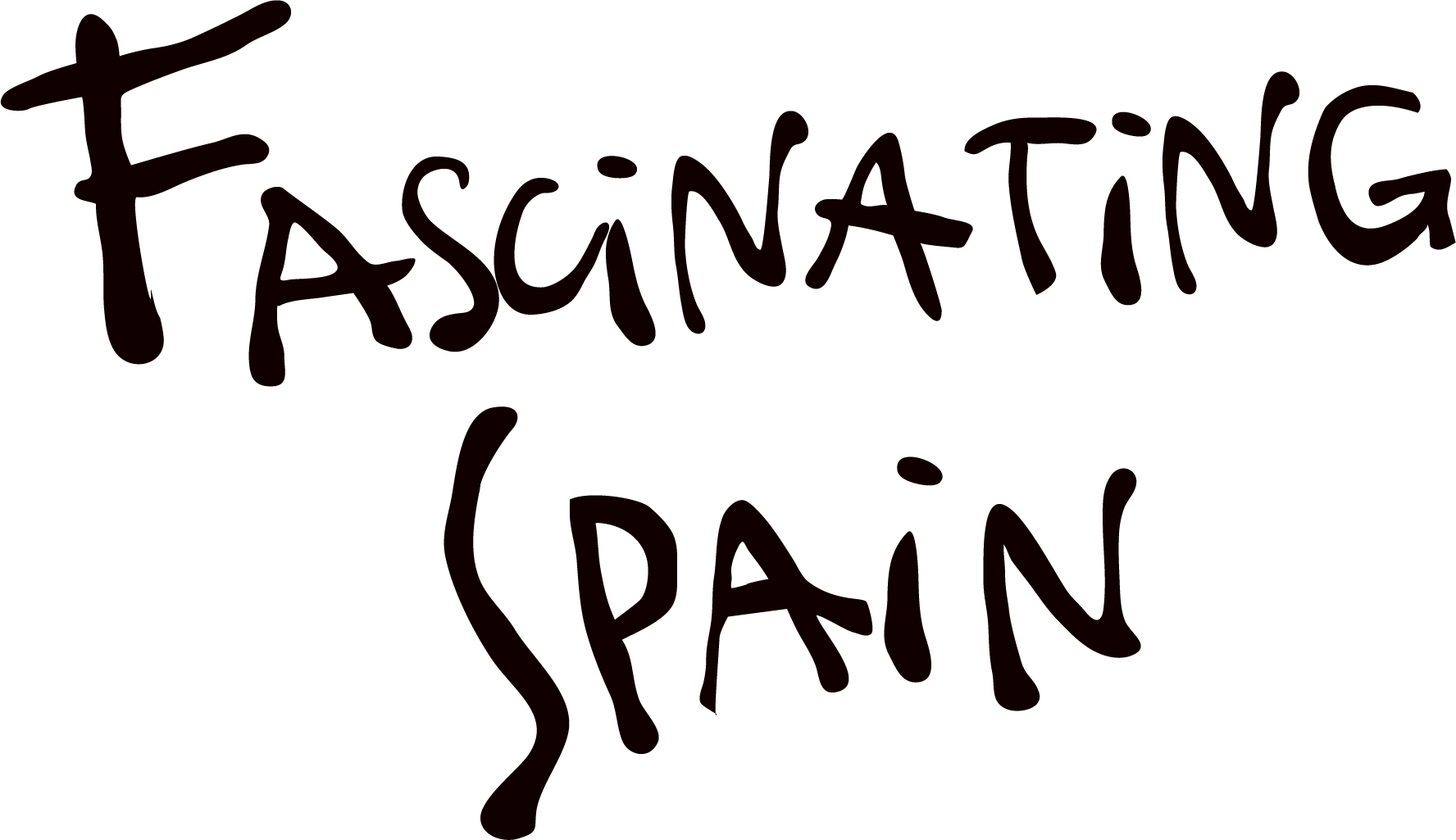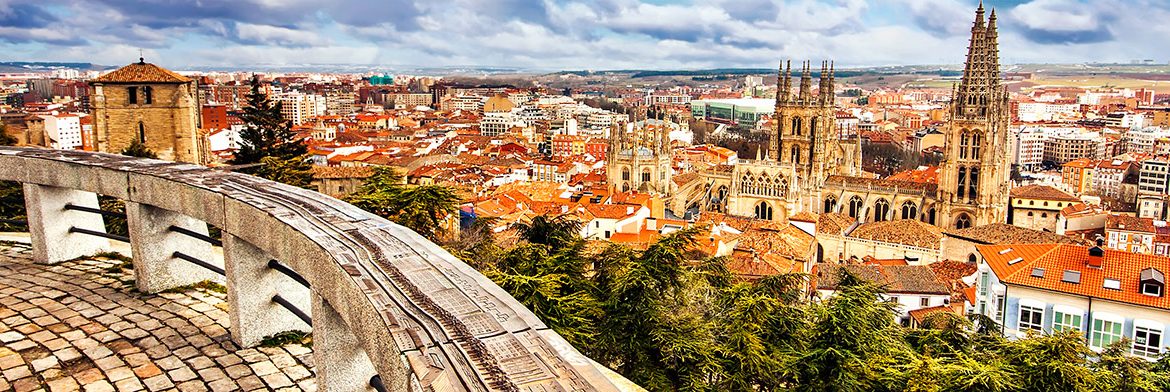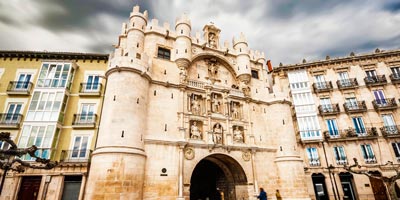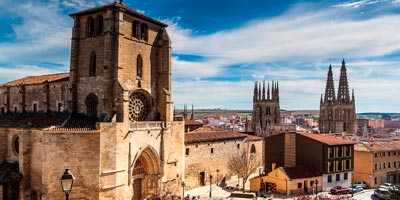Things to do in Burgos normally involve its Cathedral, the Huelgas Monastery, the Miraflores Carthusian Monastery, the Evolution Museum, the San Esteban Church, and the Retablo Museums. Also, among the main sights this city offers are the old city and the ruins. If you had more time, then visit the following localities: Atapuerca, Castrojeriz, Briviesca and Lerma. In any case, our visit to Burgos should follow four different paths in connection to the city’s main sights: the Cathedral, its surroundings, San Lorenzo’s quarter, and the Human Evolution Museum. Although you may also like visiting other two important museums such as Miraflores Cathusian Monastery and Las Huelgas Monastery.
Our visit should start at the beginning of the shor of the river, next to the Espolón Promenade -decorated with statues of kings. On the sides of the promenade you will be able to see the Statue of the Cid and Santa María’s Arch (access gate to the old city which leads to the Cathedral). This arch is one of the old twelve gates of the walls of the 14th century.
The Cathedral is the main sight Burgos offers. Regarding the outer part, it stands out by its height and magnificence; the entrance and the naves are mainly in Gothic style. Main entrance allows light to come in through its stained glass, and its towers are 84-meter height. Sarmental Gate, 1235, is decorated with incredible Gothic sculptures. The tympanum revolves around the figure of a Mighty Christ, surrounded by four evangelists. There are also representations of Moses, Saint Peter and Saint Pablo. Coronería Gate, 1250, was decorated representing the Final Judgement, with Christ at the center of the tympanum showing mercy and surrounded by Virgin Mary and St. John the Evangelist praying. Angels and archangels are also displayed. Pellejería Gate is in a Gothic plateresque façade made by Francisco de Colonia between the years 1516 and 1530.
Regarding the interior of the Cathedral, this temple has three naves. Next to the entrance you will see the figure of the Papamoscas (a toy elaborated in the 16th century characterized by a grotesque appearance opening and closing its moth when the bell rings). In the center of the transept, we find two of the most important things to see in this temple: the tomb of the famous knight Rodrigo Días of Vivar, also known as the Cid Campeador, and his wife Jimena. To the left of the transept you will find the famous golden Staircase built between the years 1519 and 1522. Do not miss either the Main Chapel made with marble and the Condestable chapel (Gothic in style similar to the plateresque style). This chapel is a temple itself inside the Cathedral. Built between the years 1482 and 1494, the chapel holds inside the shields of those who funded its construction: Pedro Fernández of Velasco and his wife Doña Mencía of Mendoza. It also houses several retablos and paintings.
There is an outstanding number of chapels inside the cathedral: Santísimo Cristo of Burgos (it has the image of a Crucified Christ and a main retablo -Neogothic in style), Presentación, Visitación (1440-1442), Santa Tecla (added in 1731-1735), and Santa Ana. We algo highlight the gate access to the High Cloister (from the 13th century, it stands out by the scene of Christ’s baptism in the tympanum) and the Low Cloister (employed as a cemetery until the 19th century; it now holds the Interpretation Center of the building). The Cathedral Museum is placed in San Juan and Santiago chapels and in the Chapter House. It stands out by its tapestry from the 16th century and paintings such as The Virgin with the Child by Hans Memling from the 16th century.

Interior of the Cathedral
In Santa María’s Plaza you will find the main façade of the Cathedral. Around this are we can highlight several main sights: San Nicolás Church (Gothic in style), Fernán González Arch (1586), the Cid’s House (1784), San Martín Mudejar Arch (14th century, which used to lead to the Jewish Quarter in Burgos), and a temple from the 16th century built upon the church where the Cid demanded from Alfonso VI the oath that would eventually lead the former to be exiled.
From the ruins of the Castle you will enjoy the most amazing views of the city. The quarter of this castle, next to the old fortress, is one of the spots that best preserve the medieval aspect of this city. Here we find amazing landmarks such as the Retablo Museum, San Esteban Church (Gothic in style, 14th century) and the Caja of Burgos Art Center (CAB), which houses contemporary art temporary exhibitions.
Heading to San Esteban Gate (14th century), Mudejar in style, we go down to San Gil Church, one of the most beautiful Gothic churches in Burgos. From here we can now go to San Lorenzo Quarter, presided over by the Baroque San Lorenzo Church. Next to this, the Cordón House (15th century) stands out as an old palace whose façade was decorated by a Franciscan cord. Here it was where the Catholic Kings received Columbus after his second trip to America. It is nowadays the headquarters of a bank. Nearby, the Plaza Mayor, presided over by a statue of Carlos III, is a gorgeous place you cannot miss. The City Hall is also in this area (1788).
If you go through San Pablo’s Bridge, we will reach the Human Evolution Museum (MEH), which deals with the findings in Atapuerca about the Homo Antecesor (the oldest hominid species in Europe). Another intesting museum to visit is the Burgos Museum, located in the old Angulo House (16th century) and Miranda House (1545).
A bit further away from the city center, you will find the Huelgas Reales Monastery, built in 1187 as a burial place and spiritual retreat for many royal and noble families. Some elements were turned into the Romanesque style such as the Church and two cloisters. The temple has the double sarcophagus holding the founders Alfonso VIII and Leonor of Aquitania. Near San Fernardo cloister we can go to the Rich Textiles Museum, which houses dresses and textiles made by Arab designers. There are also two other important chapels here: the Asunción and Santiago.
Next to the Huelgas we find the Parral Park and the King’s Hospital, set up in the 12th century to hold jacobean pilgrims. Remodeled in the 16th century, it is nowadays the headquartes of the Burgos’ University’s Rectorate. On the opposite direction, 3 km away to the east, we find the Miraflores Carthusian Monastery, at the end of the Quinta’s Promenade. This awesome building, Gothic in style, was founded as a residence by King Juan II in 1441. There are man sculptures here, such as The Announciation by Pedro Berruguete (15th century).





